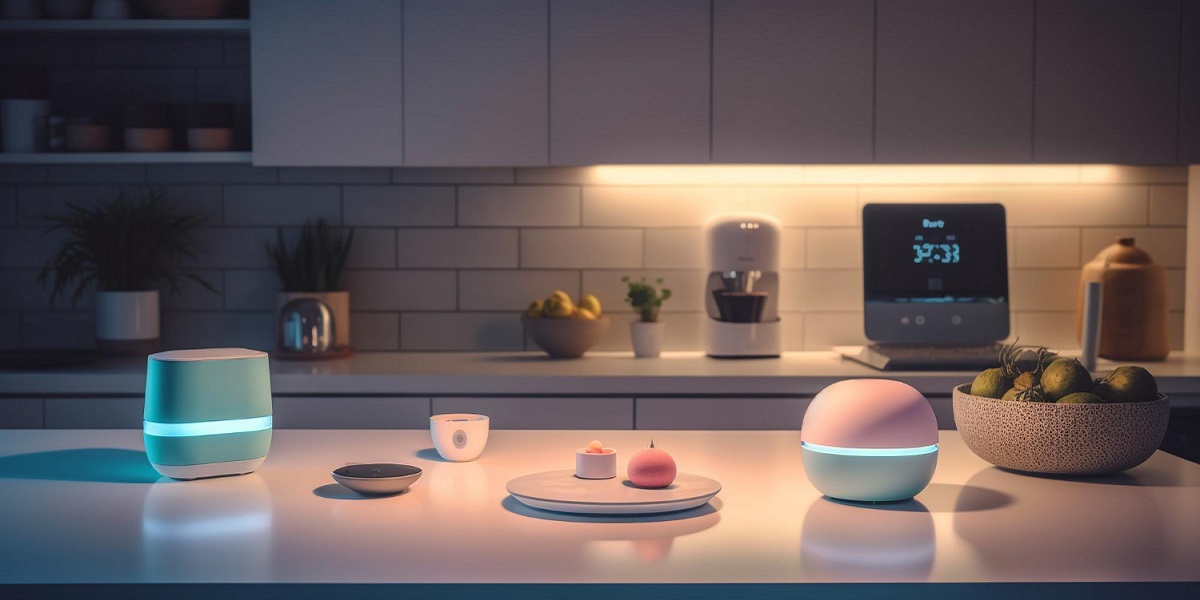
5 Tips to Improve Website User Experience
- By Olivia Welsh
- 16-03-2023
- Web Design
In today's hyper-digital world, your website is one of the most important components of your success. If you want to grow and strengthen your brand, you must have a website. If you're like most people, you probably figured that having an attractive website would be sufficient. So, why aren't you producing more leads, and why are your bounce rates still high? Most of the time, it's because you don't give any care to user experience (UX).
According to UX statistics, this frequent error may cost your company a significant amount of money in addition to driving away online users. It's important to keep in mind that a great website won't mean anything if it's difficult to use. You are not alone in wanting to improve the UX of your website. A user-friendly website may result in more traffic and happy visitors. Yet, determining how to build your site for the best user experience can be difficult.
Luckily, you don't need to experiment and fumble your way to a perfect website. You may better serve your visitors and advance your online presence by being aware of a few common tactics. This article will lead you through seven techniques to enhance your site's user experience:
Let's begin straight away:
1. Optimize your page speed:
Waiting too long for a website to load is one of the most infuriating experiences for web users. With the development of mobile devices, users are consuming content on a variety of platforms all around the world. They anticipate a quick response for the stuff they desire whether surfing online at Starbucks or watching TV on their laptop. You're probably aware that if your website takes longer than 3 seconds to load, 53% of your visitors will abandon it. According to Section.io, each extra five seconds of loading time might result in a 20% increase in website abandonment.
However, your website's loading speed affects your bounce rate and irritates your users. So, if you don't want your users to quit your website due to a poor user experience, you should think about improving your website's performance. Make sure your users can readily find what they're searching for without having to wait a few minutes for your pages to load.
When you've reviewed several fast-loading pages and realized how satisfying it is when a website loads in a matter of seconds. It's time to enhance your own. To start, use Google's free platform to assess your page performance and receive recommendations and suggestions for improving your load time on both mobile and desktop computers.
Tips to Optimize Page Speed
- Minimize HTTP requests:
Minimize the amount of HTTP requests performed by the browser by merging and compressing CSS and JavaScript files, lowering the number of pictures, and employing CSS sprites.
- Use a Content Delivery Network (CDN):
A CDN can assist in minimising page load times by caching material on servers closer to the user.
- Optimize images:
Choose the right file format and compress photographs to minimise their size. JPEG is great for photography, whereas PNG is better for graphics and transparent images.
- Minimize server response time:
Improve your server settings to shorten the time it takes to create a response.
2. Use attractive calls to action (CTA):
Your visitors are already used to interpreting visual clues to identify whether the content is relevant to them. CTAs that are clearly labeled with an action word. It allows your website visitors to explore your site more quickly and discover exactly what they're looking for in the spot they expect to find it.
While designing buttons for your website, keep color psychology in mind. Various colors convey different messages. Consider the message you want to convey to a user (trust, experience, intellect), and then select your colors wisely. The color of your CTAs can lead to an increase in conversions or a disconnected user experience. As an example, Sitepoint experienced a 35% boost in conversion when they moved from a green to a red CTA button.
Another thing to think about is the actual language you choose for your buttons. A verb or an action word should be included in the text to entice the user to take some action. Selecting the proper words or behavioral triggers is heavily influenced by the amount of emotional identification elicited by the word. There will be no action if there is no emotional connection. Therefore make your remarks powerful, timely, and action-oriented.
Strategies for Using Attractive Calls to Action (CTA):
- Use action-oriented language:
Employ verbs like "Purchase Now," "Register Today," and "Download Now" to generate a feeling of urgency and push customers to take action.
- Make it clear and concise:
Make sure your CTA is simple to grasp and delivers the advantage of taking action immediately. Make it brief and to-the-point.
- Use contrasting colors:
To bring attention to your CTA, choose colours that contrast with the rest of your website or content.
3. Use white space:
White space is an excellent method for optimizing your website for conversion. Yet, it is time to consider this strategy as one of the finest practices for improving your user experience. One of the most effective design components you can use on your website is white space. It not only lets you direct your visitors' attention to the most crucial buttons, but it also improves the legibility of your content.
Crazy Egg claims that adding white space around your information may boost attention among readers by roughly 20%. Also, this is one of the simplest techniques you can use to make your website appear open and contemporary. Using white space is usually a wise decision. Remember that it's crucial to strike a balance between the content you want to draw attention to and the quantity of white space you employ. This saves time for your customers and is also staggeringly pleasing. You can't forecast your customers' tastes, but you can use this strategy to create something neutral and less dangerous.
If you're attempting to get a lot of information above the flap (above the section that is instantly seen without scrolling), having much more white space may be replacing some useful content. The idea is to strike a balance between putting what's most important to tell at the top and leaving enough room to showcase the image and/or text. This helps the reader to concentrate on the most crucial details.
Suggestions For Utilising White Space:
- Consider the balance:
Make sure there is a decent mix of white space and information. A design with too much white space may appear empty, while one with too little may appear busy.
- Use white space for emphasis:
Utilize white space to bring attention to critical design components such as headlines or vital information. This can assist in improving the aesthetic appeal and usability of your design.
- Use white space to create a hierarchy:
Make use of white space to establish a visual hierarchy in your design. You may lead the viewer's eye and create a more organised design by giving white space to crucial features and less important parts.
4. Optimize Your Website for Mobile:
One of the most important factors to consider when developing a website is mobile friendliness. First and foremost, it is essential for your SEO since Google and other search engines take this into account when indexing your website. So, mobile friendliness is a need if you want to rank high on Google. SEO should not be the main motivator for developing a mobile-friendly website. Did you realize that mobile devices generate more than half of all online traffic? Also, it is worth noting that if your website is not mobile-friendly, your users are 5 times more likely to quit.
Does your company provide such unique items or content that your customers will put down their phones, grab a laptop, and spend more time on your website? I have no hard feelings, but I'm not sure. Let's be honest: in today's hyper-digitized world, a few keywords can direct your customers to a comparable website. Consequently, there isn't much you can do if you want to turn off a huge percentage of clients; simply don't optimize your site for mobile devices.
One of the greatest principles of UX design is mobile friendliness. This makes it possible for visitors to your page to view it whenever they want without generating any further problems. While I can't guarantee that this strategy will leave your clients in shock, it will stop them from leaving your website because of a subpar user experience.
Strategies for optimizing your website for mobile devices:
- Use a responsive design:
Make sure your website is constructed with a responsive design that automatically adjusts to multiple screen sizes. This ensures that your website appears and performs properly on any device.
- Make it easy to navigate:
Make sure your website is simple to use on mobile devices. Employ clear, easy-to-read font sizes and avoid utilising too many menu choices or buttons.
- Test on multiple devices:
Test your website on a number of devices, including smartphones and tablets, to ensure that it appears and functions properly on all of them.
5. Maintain the consistency of your website pages:
Keeping everything in line requires consistency. You name it heading widths, font selections, color, button designs, spacing, design components, illustration types, and photo selections. To make your design consistent between pages and on a single page, everything should follow a theme. It is essential that your users understand they are still on your website in order to give them a nice experience as they browse through it.
Extreme design variations from one page to the next might cause your user to get distracted and confused, and lose faith in your website. “Am I in the appropriate place?" This is a question I frequently ask myself when going through inconsistent websites. According to the consumer, design discrepancies reduce the quality of the products and services you provide.
The Winshape Foundation is an excellent example of a well-designed website. Its pages follow the same format: navigation on the right, a large header, a subhead with a background picture, and some text underneath. I know I'm still on their website no matter where I click because their styling is constant.
Ideas for Maintaining the consistency of your website pages:
- Use a consistent layout:
Maintain consistency in the layout of your website pages by using the same header, footer, and navigation menu on each page. This will assist users in finding the information they want and understanding how to navigate your site.
- Use a consistent color scheme:
Choose a color scheme for your website and use it consistently across all pages. This will aid in the creation of a professional and consistent design for your website.
- Use consistent fonts:
Pick a font family for your website and utilize it consistently across all pages. This will aid in the creation of a readable and straightforward design.
Conclusion
Your success is directly impacted by the user experience they have while engaging with the user interface of your website. Do they leave it in frustration or do they stay without experiencing any major annoyances? As a website owner, you need to ask yourself these queries. You should focus all of your efforts on making the second possibility a reality. You risk losing a lot of prospective clients if you don't.
Make sure your website is created with your users' comfort, contentment, and greatest success in mind by viewing it through their eyes. This is the finest brand message you can send because by doing these actions, you're saying loud and clear that you care about the sort of experience customers have with your company.
Recent blog

Harnessing Social Media: Tactics For Powerful Marketing Success Achievement
Social Media | 25-07-2024
7 Hidden Secrets of MSI Laptop Boot Menu Key
Technology | 24-07-2024




